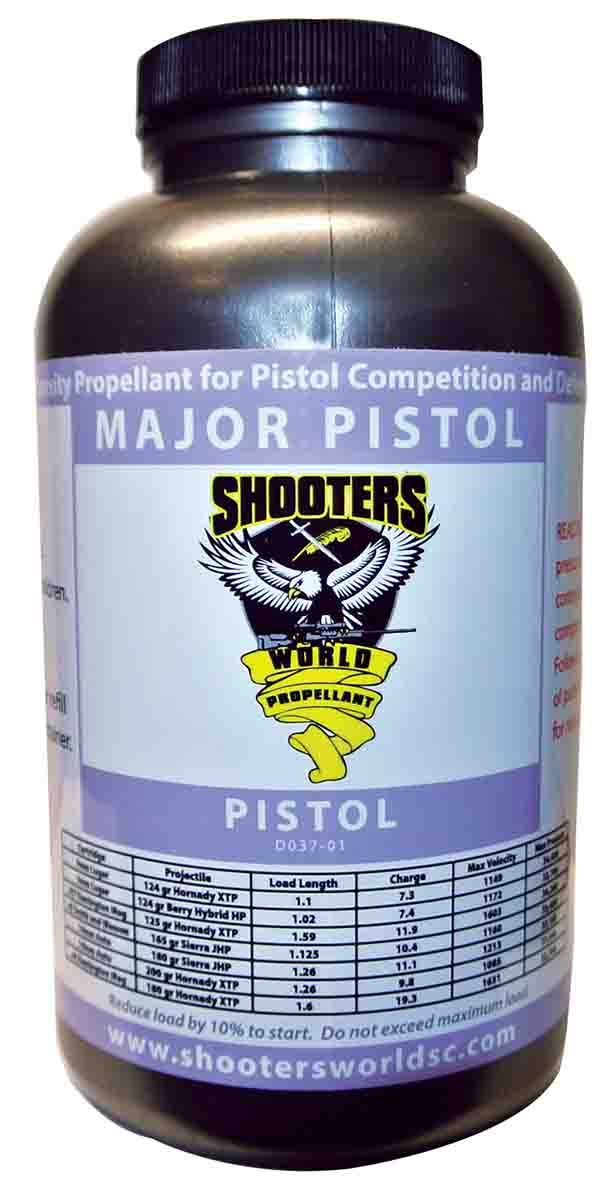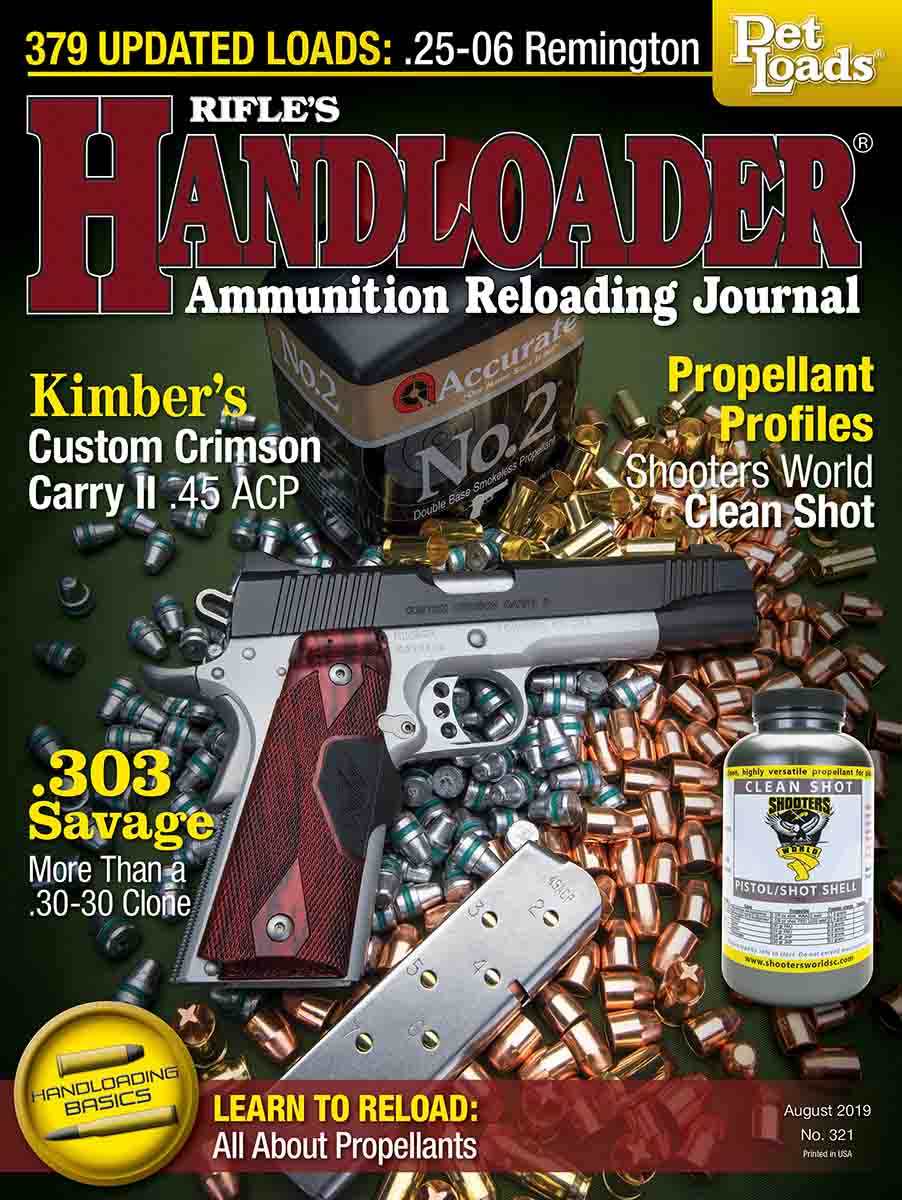Propellant Profiles
Shooters World Major Pistol
column By: Rob Behr |

Like most of the powders from Shooters World, Major Pistol is manufactured by the Czech firm Explosia. It is marketed in Europe under the Lovex brand under the designation D037.1. The powder is an extremely fine-grained, double-base spherical with an average diameter of .012 inch. This small grain dimension combined with a high bulk density of .98 grains/cc creates very good flow characteristics and make it ideal for use with progressive loading presses.
.jpg)
There are three options for handloaders searching for data using Major Pistol. The Shooters World handloading guide provides data for six cartridges, including the 9mm Parabellum, .357 Magnum and .45 ACP. The Lovex guide adds several more to the mix, including the 9x18 Makarov, a cartridge that found its way to the U.S. through thousands of inexpensive and reliable handguns imported after the fall of the Soviet Union. Finally, because D037.1 was imported and canisterized as Accurate No. 7 up until about 2008, data for that propellant may be used as a starting point for loads using Major Pistol.
Looking at the loading data, it becomes apparent that Major Pistol is at its best operating at pressures above 20,000 psi. This powder was developed for small cartridges with limited case capacities that operate at high pressure. To make the point a bit finer, it was created to maximize the performance of the 9mm Parabellum, especially in carbine length barrels. Understanding why this powder performs so well in carbines is simple. It creates a lot of gas.
Shooters World lists 7.4 grains of Major Pistol as the maximum load for a Hornady 124-grain FMJ bullet. A very fast powder for the same bullet in another guide lists 3.0 grains as a maximum load. Both loads have published pressures of just under 34,000 psi. From one perspective, the faster powder is the more economical load. From a functional standpoint, however, there are more things to consider. While both operate at similar pressures, Major Pistol takes more time to reach its peak, allowing more powder to be used in the cartridge. All of this extra powder is converted into the gas that drives a bullet. In a longer-barreled carbine, this extra gas produces noticeably higher velocities while still operating within pressure guidelines.
.jpg)
Next up was one of the unusual Kel-Tec SUB 2000 folding carbines in .40 S&W. If you haven’t seen one of these, they are worth a look. Small enough to fit in a daypack when folded in half, they offer a lot of accurate firepower to a hiker without adding a lot of weight. Using a Speer 180-grain Speer Gold Dot and 8.5-grains of Major Pistol, the carbine’s 16.3-inch barrel produced an average velocity of 1,157 fps. Considering that the maximum published load from Shooters World was 1.3 grains higher than the test load, it is apparent that the .40 S&W from a carbine is able to produce 10mm Auto handgun performance without undue pressure. A Glock 23, using the same load, only produced 954 fps.
Major Pistol is on the fast side for magnum revolver cartridges, but it did produce interesting results. A charge of 11.9 grains behind a 125-grain bullet was a listed maximum using the Shooters World data. No barrel length was provided, but the published velocity was listed as 1,603 fps at a bit above 33,000 psi. Using this load, my Ruger Security Six only produced 1,041 from its 4-inch barrel. Considering the amount of powder used to generate that velocity, it is notable that the 9mm Glock came so close to matching the .357 Magnum.
The tested .44 Magnum load produced velocities much closer to the published data. It was also the first time out for one of the more unusual rifles on hand. The Chiappa Firearms M6 is a superposed survival gun with a .22 Long Rifle barrel on the bottom and a 12-gauge barrel on top. It can be purchased with that company’s X-Caliber inserts, which allow the shotgun barrel to fire popular pistol cartridges as well as .410 and 20-gauge shotgun shells. More gimmick than survival, it is still a lot of fun on the range. Using the .44 Magnum insert, a 180-grain cast lead bullet averaged 1,670 fps from the 7-inch barrel.
One of the great advantages of handloading is that it gives the ability to select components and craft them into very specific loads for some desired task. Major Pistol is one of the propellants that was created with these specialized goals in mind. It may not be a universal workhorse like Alliant Unique, but it isn’t intended for that role. If high-performance loads for a 9mm or .40 are your goal, especially in carbines, there are very few powders that can rival Major Pistol. This powder really isn’t for plinking.


